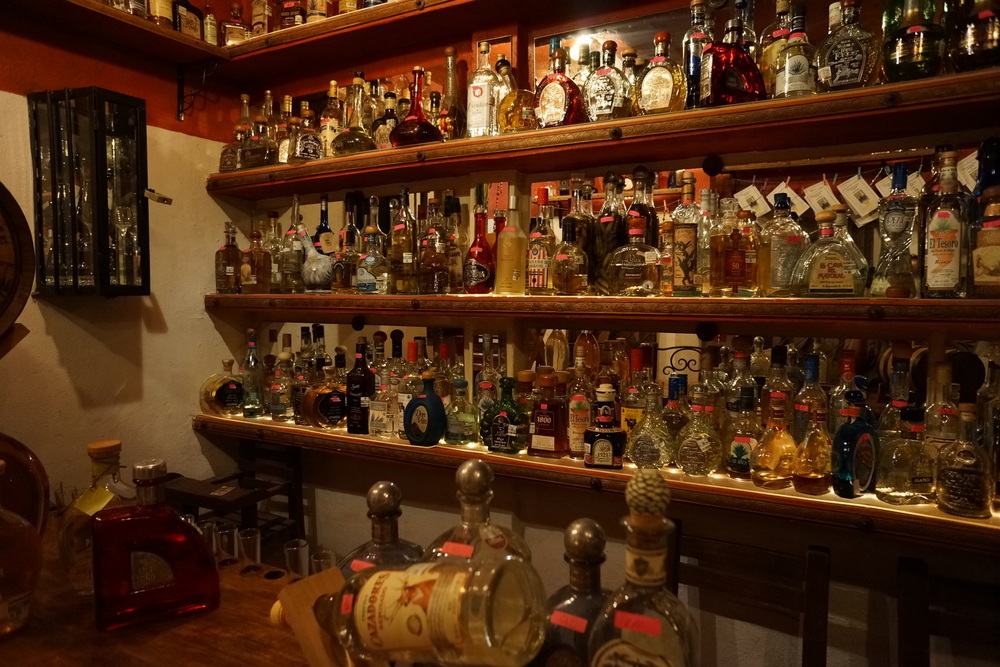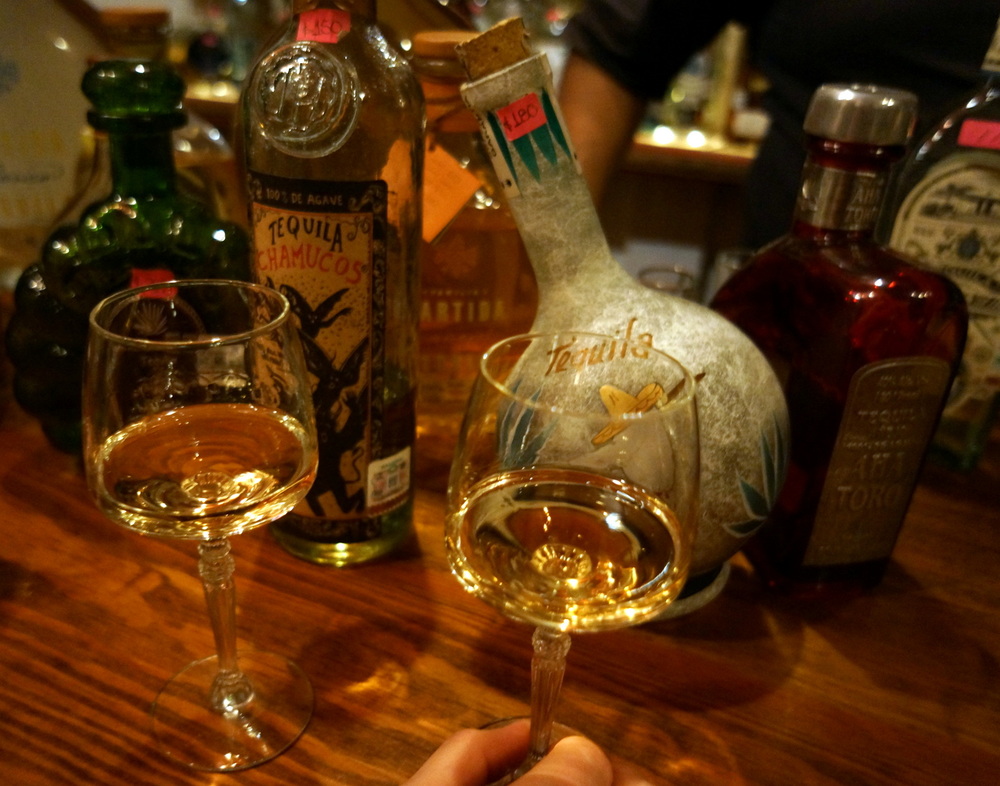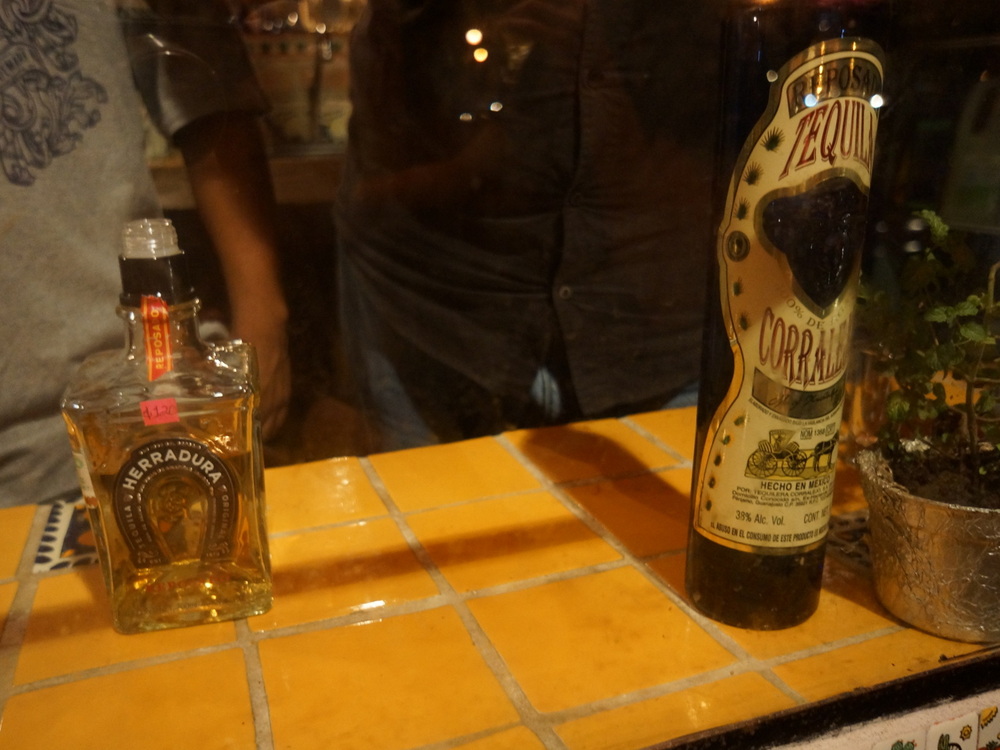I’ve never really appreciated tequila. The closest I came was a series of excellent, smoky, mezcal* cocktails at Mayahuel in New York a few years ago, and the occasional good tequila Francisco had around, though I was never concentrating just on it.
That started to change last week– I was down in Sayulita, Mexico for vacation, and got the tip that I should check out the Sayulita Fish Tacos Tequila Bar. The fish tacos in the restaurant upstairs were pretty bad, but the bar itself was a revelation. A few notes of what I remember or jotted down:
I went there three of the evenings I was in town, and the bartender and other travelers at the bar were all very friendly, offering tips and tastes.
These were all “sipping tequilas”, to savor gradually like a whiskey, and with much more variation tequila to tequila than I’d ever noticed before.
Of the maybe 20 I tasted (at least at the sip level), some notable ones:
Cava de Oro** (the white bottle) was my favorite of the trip, and the one that I ordered twice: very smooth and mellow, with a silky agave flavor and no harshness or smokiness, but also without being too sweet. [A+]
Chamucos was good in a very different way– spicy, a bit of smoke, but well-balanced and not at all harsh. [A-]
Aha Toro (Anejo***) (not shown) was also good though not especially distinctive: smooth and balanced. [B+] 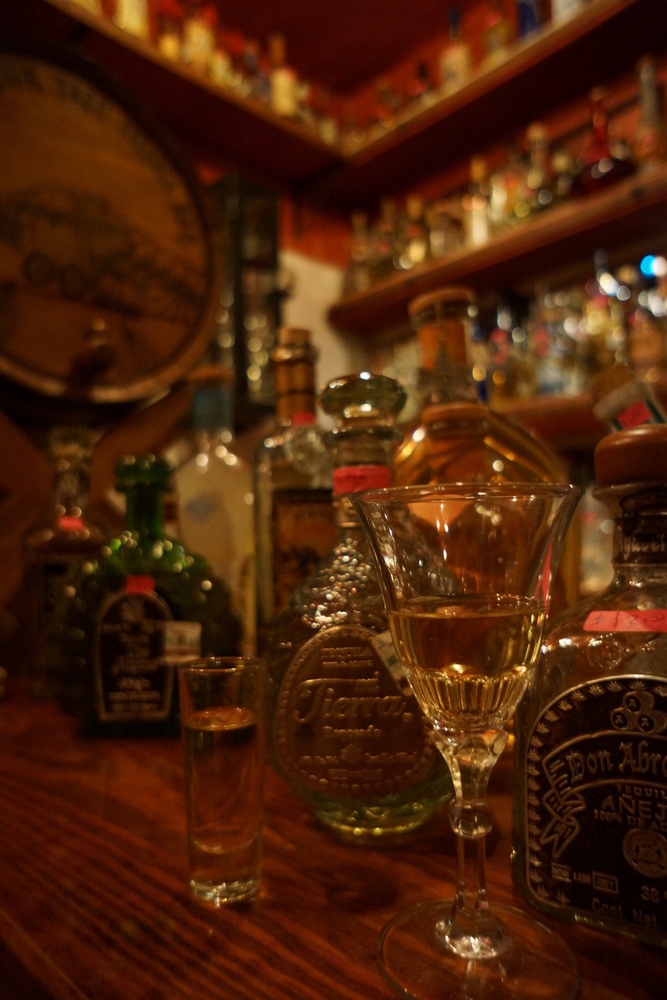
Tierra Reposado and Don Abram Anejo were both good, but I didn’t write anything specific down about them / I don’t remember them being unusual. [B] 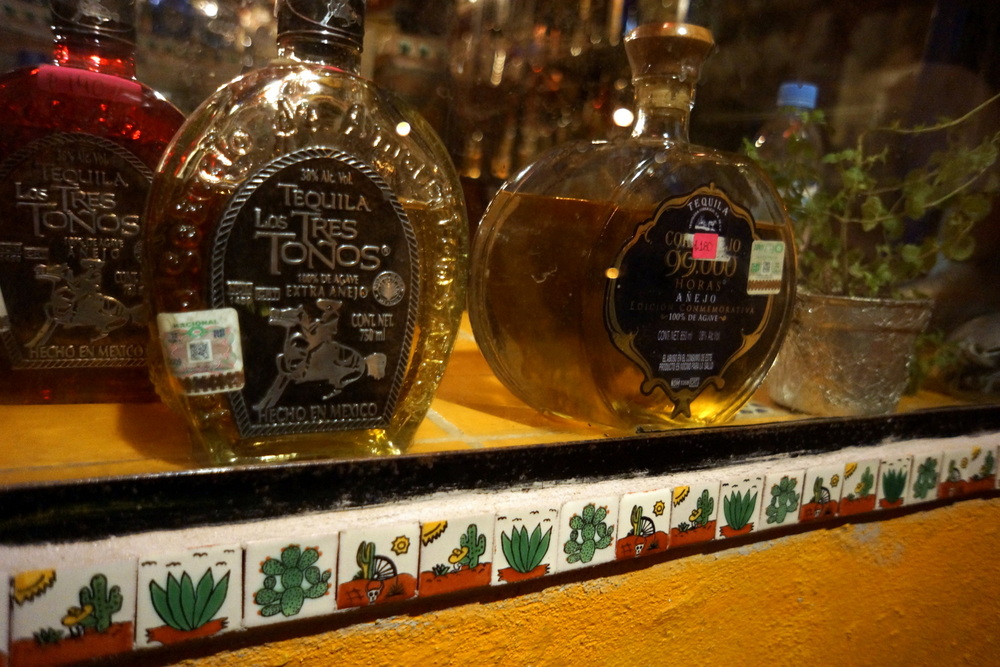
After tasting sips of a few to narrow in on what to get the third evening, we settled on Los Tres Tonos Extra Anejo and 99000 Anejo, both very enjoyable in the smooth-with-a-little-smoke vein, and I remember liking the 99000 especially, though when writing this up two weeks later I don’t really remember the difference between them. [B+, A-] 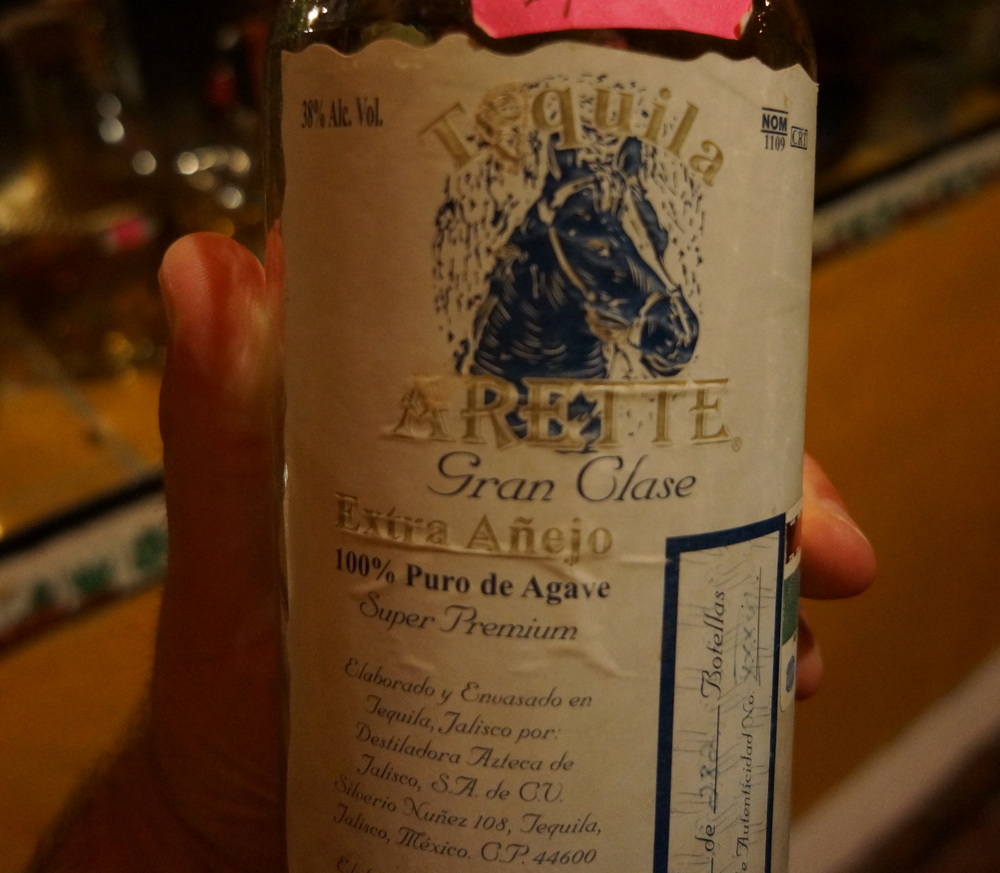
Arette Extra Anejo was quite different from the others, smooth but also herbal, vegetative, sort of like the flavors in gin / campari / fernet, though milder. It and Cava De Oro were my favorites of the trip (though Arette was 2x-3x more expensive than anything else I had here, at M$400 (about US$34) for a shot– a bottle costs about $150 in the US). [A+]
Worth it on a special occasion and as a way to wrap up a great trip.
Both this Herradura Resposado and the Corrales were good sipping tequilas in the middle of the smoky / smooth range, but also weren’t strongly memorable. [B]
\* I looked up the details on Wikipedia so you don’t have to: " Mezcal is a distilled alcoholic beverage made from the maguey plant (a form of agave, Agave americana) native to Mexico. The word mezcal comes from Nahuatl metl and ixcalli which mean ‘oven cooked agave.‘Today, mezcal is still made from the heart of the maguey plant, called the “piña,” much the same way it was 200 years ago, in most places. In Mexico, mezcal is generally consumed straight and has a strong smoky flavor. Mezcal is not as popular as tequila (a mezcal made specifically from the blue agave in select regions of the country)."
\\ Gold (oro) tequila could be a real, 100% agave tequila that’s a blend between a blanco and a resposado, as in this case… or it could be a cheap tequila with non-agave spirits and food colorings added.
\\\* The basic tequila classification of silver/blanco, reposado, anejo, extra anejo ranks how long it has been aged or rested in wood barrels (from young to old). Longer aging = stronger, smoother flavors, darker colors, and generally more expensive (though not necessarily better, depending on your tastes).
